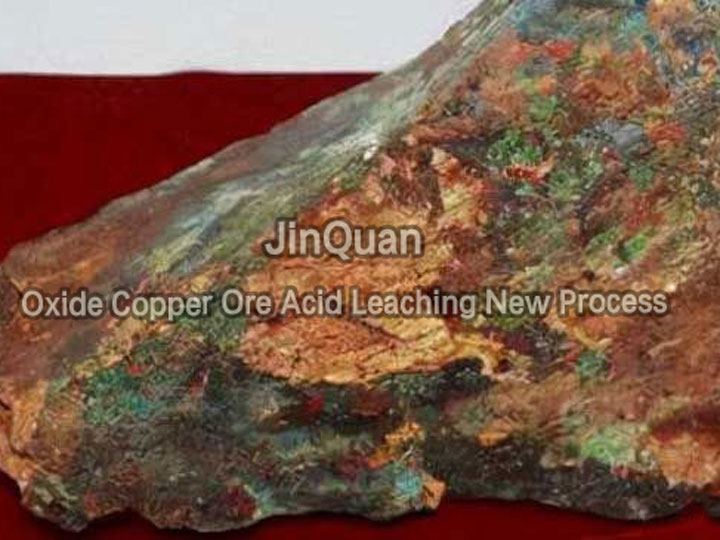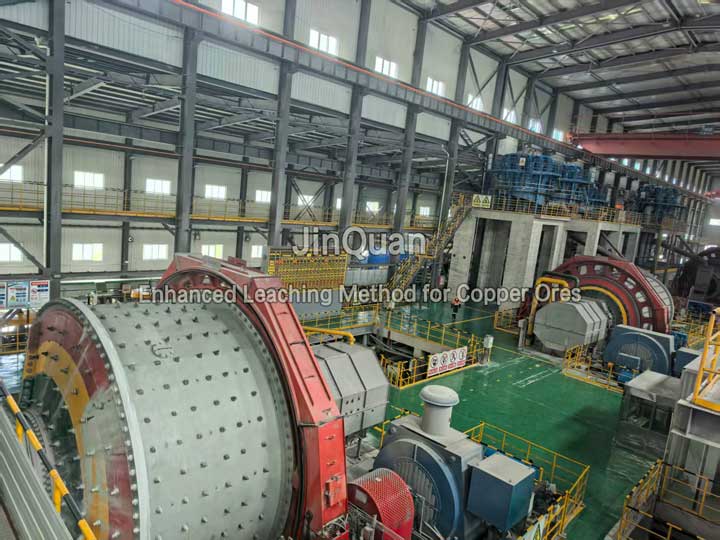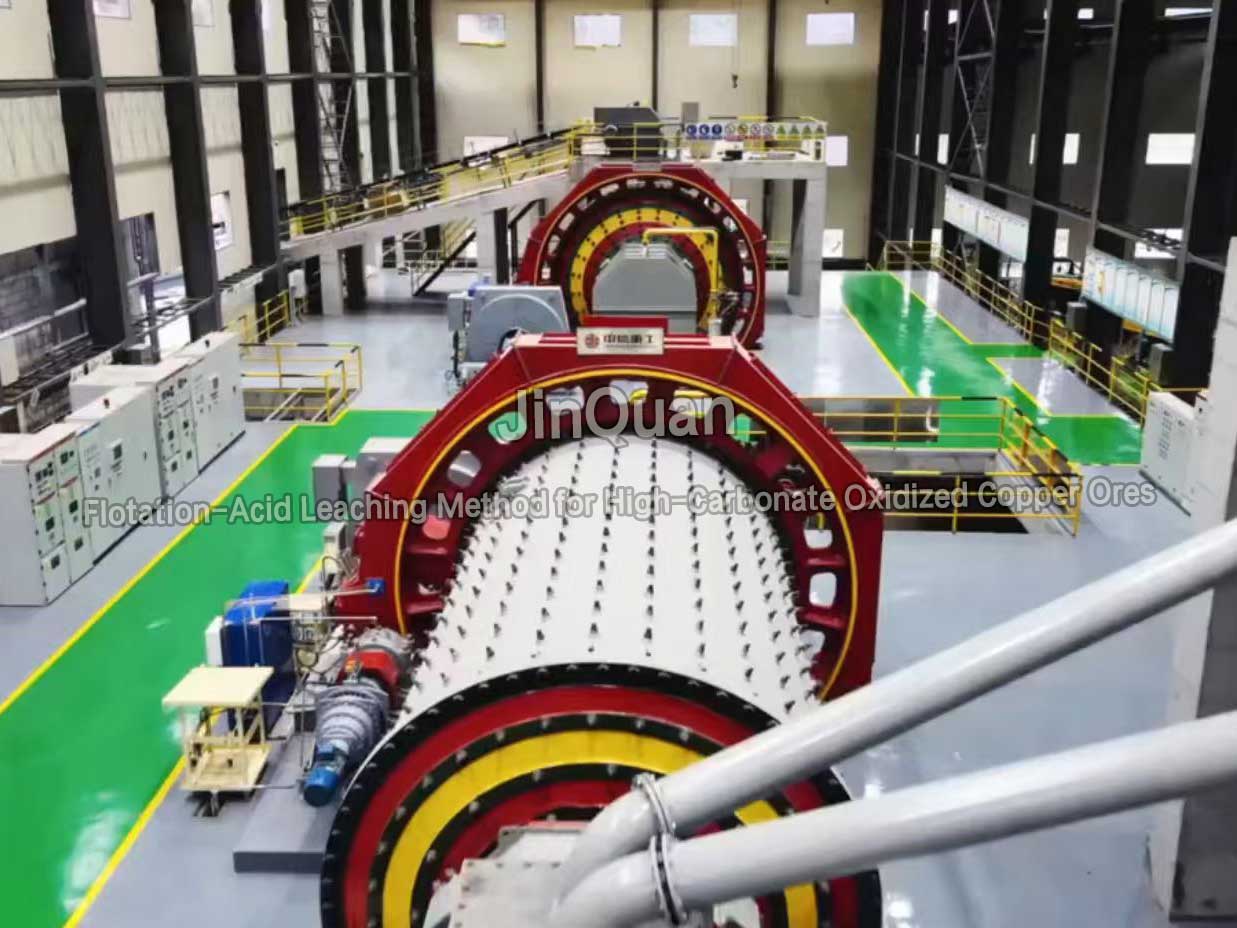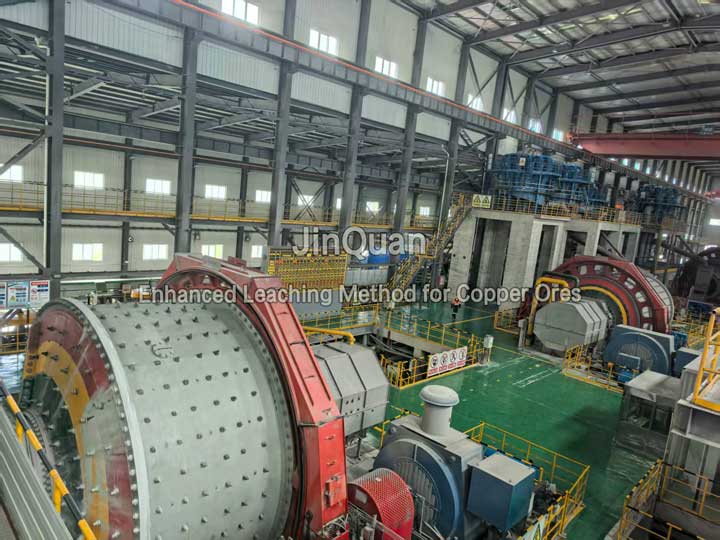-
 Recovering Copper, Silver, Gold
Recovering Copper, Silver, GoldMethod for Recovering Copper, Silver, Gold, Lead, Iron, and Sulfur from Complex Chalcopyrite Ores:
This method employs the use of hydrochloric acid, oxygen, and sodium hydroxide in a leaching process to recover copper, silver, gold, lead, iron, and sulfur from complex chalcopyrite ores. A small amount of oxidizing agent is used as a catalyst. The solution can effectively recover multiple elements from the leach solution, while the slag can be utilized for sulfur recovery along with gold and sodium sulfide. The leach solution is designed for repeated recycling to maintain its effectiveness. The electrolytic device incorporates a separated petal tank to facilitate copper recovery.
This approach significantly enhances the efficiency of low-cost, nontoxic gold extraction. By minimizing gold loss during the process and ensuring that all reagents are non-toxic and cost-effective, this method achieves high recovery rates for various elements. Importantly, it avoids pollution and does not produce any toxic or hazardous waste.
-
 Copper Extraction from Oxidized Copper Ore
Copper Extraction from Oxidized Copper OreMethod for Copper Extraction from Oxidized Copper Ore:
This method for extracting copper from oxidized copper ores involves a low-temperature, constant-pressure ammonia leaching process. It optimally combines wet metallurgical techniques such as "ammonia leaching - solvent extraction - electrowinning" and mineral processing techniques like "flotation" to form a novel copper-magnesium oxide ore processing flow.
By abandoning the high-temperature, high-pressure, or heating and pressurizing methods used in traditional ammonia leaching to achieve high copper leaching rates, this method leverages the advantages of ammonia leaching in easily dissolving oxidized copper minerals while also utilizing the floatation technique's ability to easily recover chalcopyrite. This significantly reduces energy consumption and costs, enhancing its practicality and economic feasibility. The process is easy to industrialize and scale up for production.
-
 Direct Electrowinning of Copper from Chalcopyrite
Direct Electrowinning of Copper from ChalcopyriteDirect Electrowinning of Copper from Chalcopyrite:
The direct electrowinning of copper from chalcopyrite falls under both chemical and metallurgical fields. It is characterized by using the leached solution at the anode for copper extraction via electric chemical dissolution, while simultaneously producing electrolytic copper meeting GB466-82 standards at the cathode.
This method utilizes fluidized electrospinning tanks to process single chalcopyrite ores, complex ores, and high-pb and zn-bearing chalcopyrite ores. The process is simple, has low energy consumption, and is environmentally friendly, making it suitable for industrial implementation without causing pollution.
-
 Extracting Copper from Mixed-Type Copper Ores
Extracting Copper from Mixed-Type Copper OresMethod for Extracting Copper from Mixed-Type Copper Ores:
The method for extracting copper from mixed-type copper ore deposits involves utilizing sulfide copper ores and oxide copper ores as raw materials. The process involves breaking down these ores into suitable sizes. Oxidized copper ores are directly treated using bacterial leaching, while the oxides are first washed and screened before being separately processed into slimes and sand. These fractions undergo agitated leaching and bacterial leaching. The leach solutions are then subjected to solvent extraction, with a portion being recirculated back for continued bacterial leaching to maintain acid balance, and the remaining portion being used for further processing of slimes and sands. This wet metallurgical approach avoids traditional grinding and roasting steps, making it cost-effective and environmentally friendly.
The process yields high copper recovery rates of 80% from sulfide copper ores and 93% from oxide copper ores. It is characterized by low costs, minimal capital investment, and minimal environmental impact, offering a sustainable solution for regions with mixed-type copper ore resources. This method provides a new development opportunity for the metallurgical industry in such areas.
-
 Method for Recovering Mixed Copper Ores
Method for Recovering Mixed Copper OresThe method is characterized by the following steps:
Ore Grinding: The ore is ground to -0.075 mm, representing 60–80% of the original mineral content.
Chemical Addition: Add 500–1200 g/t of sodium thiosulfate (Na₂S), 100–1000 g/t of malachite, and 25–100 g/t of oleate (e.g., sodium dodecyl sulfate or similar).
Copper Concentrate Separation: The treated ore is separated into copper concentrate and flotation tailings.
Magnetic Separation: The flotation tailings are subjected to magnetic separation under a field strength of 0.35–1.30 Tesla, yielding magnetic concentrate and magnetic tailings. The magnetic concentrate is then dried to a liquid-to-solid ratio of 2–3:1.
Leaching: Add concentrated sulfuric acid (H₂SO₄) to achieve a pH of 1, agitate the mixture for 20–60 minutes, and perform solid-liquid separation to yield leach solution and precipitated residue.
Wet Metallurgical Processing: The leach solution is processed using wet metallurgical methods to produce cathode copper.
This method combines flotation and leaching processes and achieves a high copper recovery rate. It is simple, efficient, cost-effective, energy-saving, and environmentally friendly, making it an ideal approach for processing mixed copper ores.
-
 Hybrid Method for Precious Metal Recovery in Gold Mines
Hybrid Method for Precious Metal Recovery in Gold MinesHybrid Method for Precious Metal Recovery in Gold Mines:
The hybrid method combines flotation and cyanide extraction to recover precious metals from fine gold ores. The process involves the following steps:
Crushing: Use crushers to break down the ore into manageable sizes.
Grinding: Utilize ball mills to achieve a fine grind of the ore.
Drying: Dry the ground ore using dryers.
Flotation: Float the gold-bearing minerals using flotation machines.
Cyanide Leaching: Dissolve gold from the froth using cyanide solutions in a series of leach tanks.
Gold Recovery: Extract gold from the solution via electrowinning or zinc precipitation.
This hybrid approach minimizes capital investment while achieving high separation efficiency. It is characterized by low energy consumption and minimal maintenance requirements, ensuring smooth operation at large-scale mining sites.
-
 Producing Copper Sulfate from Oxidized Copper Ores
Producing Copper Sulfate from Oxidized Copper OresMethod for Producing Copper Sulfate from Oxidized Copper Ores:
This method is used to produce copper sulfate from Oxidized Copper Ores, involves the following steps:
Ore Breakage:
The ore is crushed into particles of size 2-4 cm;
Stainless Steel Kettle Treatment;
Place the crushed ore into a stainless steel kettle;
Add water to cover the ore;
Add diluted sulfuric acid (40%-60% concentration) in the amount of 20-30 kg per ton of ore.
Heating: Heat the kettle at a temperature of not less than 100°C for at least 8 hours.
Solvent Recovery: Remove the residual solution from the stainless steel kettle and use it for copper sulfate production.
This method features high recovery rates, low costs, high profitability, simple operations, ease of operation, no pollution, and no gas emission.
-
 Flotation-Acid Leaching Method
Flotation-Acid Leaching MethodFlotation-Acid Leaching Method for High-Carbonate Oxidized Copper Ores:
This flotation-acid leaching method for processing high-carbonate oxidized copper ores involves the following steps: after grinding the ore to a certain degree, a combination of collecting agents is used for sulfide flotation to remove carbonate acid-consuming layers, resulting in a coarse concentrate. Under specific conditions, this coarse concentrate is then subjected to leaching to produce a copper sulfate solution.
This method effectively removes the carbonate acid-consuming layers from the original ore, reducing acid consumption in wet leaching by over 70%, while ensuring a copper recovery rate of more than 85%. It reduces production costs and scales down investment requirements for wet metallurgical plants. The process is flexible and easy to control, making it suitable for large-scale industrial applications.
-
 Enhanced Leaching Method for Copper Ores
Enhanced Leaching Method for Copper OresEnhanced Leaching Method for Copper Ores:
This enhanced leaching method, belonging to the wetting metallurgy field, involves dividing the leach solutions of each unit cell in a heap into multiple groups, where the copper and acid concentrations in each group's leaching solution are different.
The method uses a high-copper, low-acid leaching solution for short-term heap leaching units, while using a low-copper, high-acid leaching solution for long-term heap leaching units. This simplified operational approach improves the copper leaching rate.







